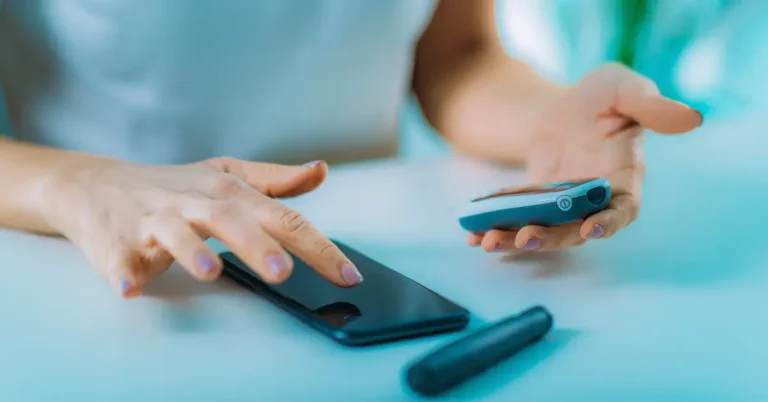Due to the extreme ongoing effect of the COVID-19 pandemic, the US Department of Health and Human Services has renewed the January 31, 2020 determination that a public health emergency has existed nationwide since January 27, 2020. This decision implies that all current HHS/CMS exemptions and flexibilities will be extended until October 17, 2021, unless canceled sooner by Secretary Xavier Becerra. Any exemptions and flexibilities put in place by governments and commercial payers in accordance with these declarations will also be extended.
The renewal determination takes effect on July 20, 2021 and runs through October 17, 2021. While Secretary Becerra has indicated he expects the PHE to continue through the end of the year, legally he can only extend it for 90-days at a time.
During the COVID-19, CMS Affirms the Use of Remote Patient Monitoring (RPM)
Centers for Medicare & Medicaid Services (CMS) notes in the IFR2 that there is some misunderstanding about the length of monitoring necessary for the payment of remote patient monitoring CPT codes. This misunderstanding predates the PHE and originates from the 2019 and 2020 CPT Manuals’ prefatory wording, which states, “Do not report 99453 or 99454 for monitoring of fewer than 16 days.” On March 30, 2020, the first Interim Final Rule was published.
CMS emphasized that the RPM codes are not restricted to individuals with chronic illnesses but are also suited for monitoring acute conditions like COVID-19 – and, presumably, acute post-surgical periods of treatment. Some healthcare practitioners and remote patient monitoring providers questioned the intended interpretation of the CPT Manual’s “monitoring of fewer than 16 days” phrase before and during the PHE wondering if the language is intended to distinguish longer-term use of the RPM codes for diagnostic purposes, such as identifying a heart condition, from shorter-term use for care management services – or whether the language indicates an expectation that a patient record and transmit readings via an RPM device for at least 16 out of 30 days for the RPM codes to be revoked.
Within the last few years, CMS has permitted reimbursement for five RPM codes. Concerning public concerns about RPM, CMS addressed our payment rules about RPM services represented by CPT codes 99453, 99454, 99091, 99457, and 99458 in the CY 2021 PFS final rule. In addition, following the COVID-19 PHE, three RPM service changes have been implemented as a permanent policy.
RELATED: CMS Amendments to Remote Patient Monitoring Rules 2021
Let’s take a look at the three most major RPM updates.
1. Clarification about the definition of “interactive communication” and the prerequisites for it in CPT 99457 and 99458.
CMS stated that the 20-minute billing period for CPT codes 99457 and 99458 should encompass care management services and synchronous, real-time contacts. In other words, while CMS’s prior definition of “interactive communication” adds to the total time, it is no longer the only activity that should be included in the total time. According to CMS, “…the 20-minutes of intra-service work associated with CPT codes 99457 and 99458 covers a practitioner’s time involved in ‘interactive communication’ as well as time engaged in non-face-to-face care management services throughout a calendar month. “Although CMS requires some monthly “interactive communication” (i.e., phone or video conferencing), it does not specify the appropriate or anticipated share of such communication in each 20-minute code.
The major headline here is that RPM providers can now charge CMS for interactive communications and also remote care services provided under CPT 99457 or 99458. Each 20-minute code now includes a chart review, treatment planning, patient messaging, and real-time voice communication.
2. Modification of the 2-day and 16-day requirements
The number of measurement days necessary to charge CPT codes 99453 and 99454 has been a source of considerable uncertainty for most of the past year. A waiver given during the COVID-19 public health emergency is the cause of the misunderstanding. This waiver allowed physicians to provide and bill for remote patient monitoring services to COVID-19 patients who had a suspected or confirmed case.
The final rule’s phrasing did not properly identify the 2-day requirement with individuals who had suspected or confirmed cases of COVID-19. As a result, some speculated that the 2-day minimum may apply to all patients during the PHE.
While the correction document does not directly address such COVID-19 patients, the PHE, or the aforementioned waiver, CMS does strive to clarify what is currently necessary for RPM billing. According to the clarification paper, “the medically required services connected with all medical devices for a single patient can be invoiced… when at least 16 days of data have been gathered.”
The emphasis on “16 days” by CMS should be taken as meaning that this amount — rather than two days — is the current default requirement. As a result, only the exclusions specified in the PHE waiver are eligible for the 2-day requirement.
3. Clarification about the number of practitioners qualified to provide RPM services
CMS confirmed, or one might say reaffirmed, that only a single practitioner can bill CPT codes 99453 and 99454 within 30 days. This differs from the widely held interpretation of the 2020 final regulation, which said that several providers may bill for the same patient for various RPM devices. (e.g., a cardiologist monitors blood pressure readings while a gastroenterologist or bariatrician monitors weight). Providers should check to see whether potential remote patient monitoring patients are currently getting RPM services from another provider before starting new RPM services.
According to the April 30 IFR (Interim Final Rule) or PHE, CMS will allow remote physiologic monitoring services to be reported to Medicare for periods of fewer than 16 days, but no less than two days. Patients with a suspected or confirmed diagnosis of COVID-19 are eligible for payment under CPT codes 99453, 99454, 99091, 99457, and 99458 for monitoring lasting less than 16 days but more than two days.
Here are the most significant takeaways from the final rule
- We highlighted that for RPM services to be provided after the COVID-19 PHE has ended, there must be an established patient-physician connection.
- We clarified that once the COVID-19 PHE expires, 16 days of data must be gathered and sent every 30 days to bill CPT codes 99453 and 99454.
- We highlighted that RPM services may be medically necessary for both individuals with acute and chronic illnesses.
- We agreed that an agreement to receive RPM services might be requested at the time they are provided.
- We agreed that auxiliary workers may provide services defined by CPT codes 99453 and 99454 in conjunction with and under the direction of the billing practitioner. Contract employees may be included in the auxiliary staff.
- We clarified that the medical device supplied to a patient as part of RPM services must be a medical device as defined by Section 201(h) of the Federal Food, Drug, and Cosmetic Act, that the device must be reliable and valid, and that the data must be electronically (i.e., automatically) collected and transmitted rather than self-reported.
- We clarified that only physicians and NPPs who are eligible to furnish E/M services may bill RPM services.
- We clarified that for CPT codes 99457 and 99458, an “interactive communication” is a conversation that occurs in real-time and includes synchronous, two-way interactions that can be enhanced with video or other kinds of data as described by HCPCS code G2012. We further clarified that the 20-minutes of time required to bill for the services of CPT codes 99457 and 99458 can include time for furnishing care management services as well as for the required interactive communication.
Prospects for the Future of Remote Patient Monitoring
The revision document is not just tremendous news for remote patient monitoring in 2021, but it is also wonderful news for RPM’s long-term prospects. Although CMS clarified certain elements of RPM in the 2021 rule comments, it also reiterated its support for RPM and plans for future development. We expect that Medicare will further clarify the remaining blurry margins about what qualifies for RPM to avoid abuse while continuing to expand the overall scope and coverage of the program, which undoubtedly is a win-win for providers and patients.








